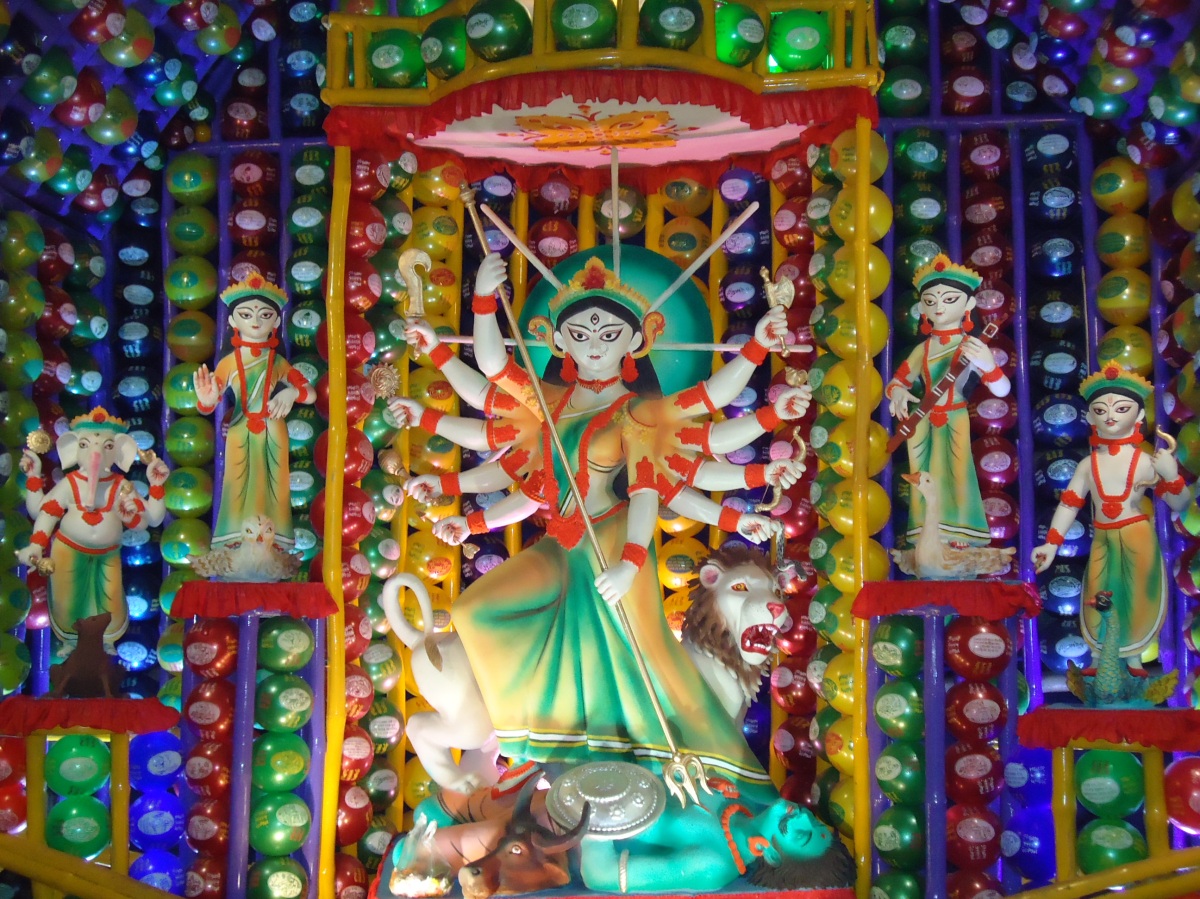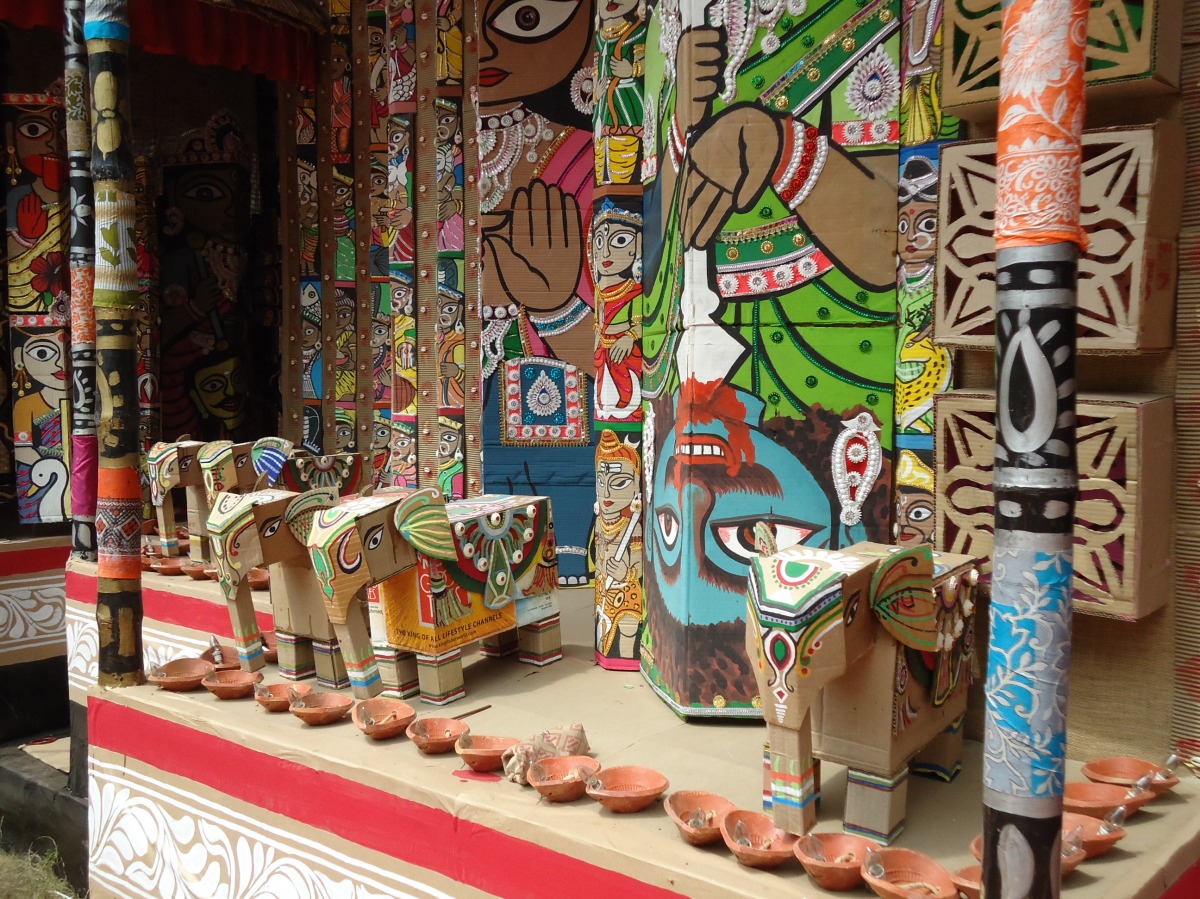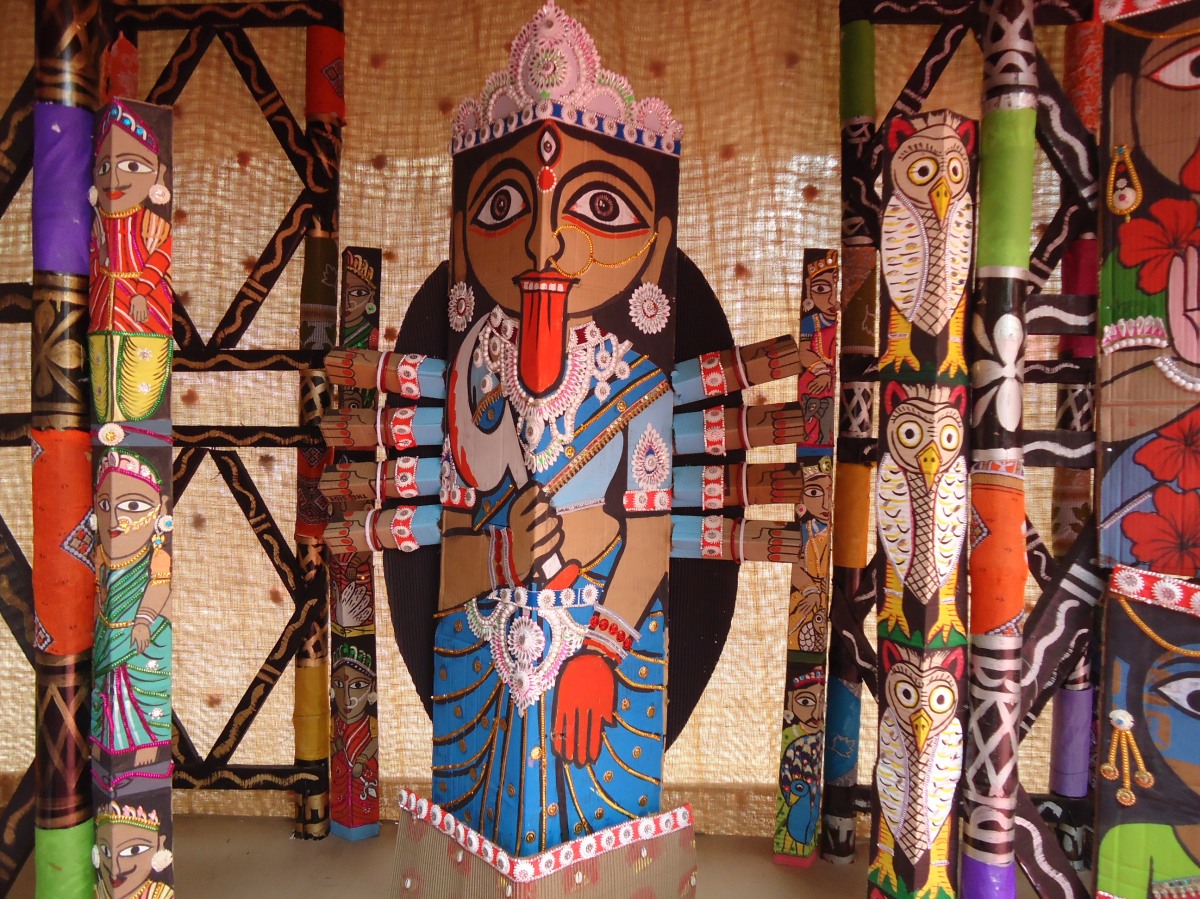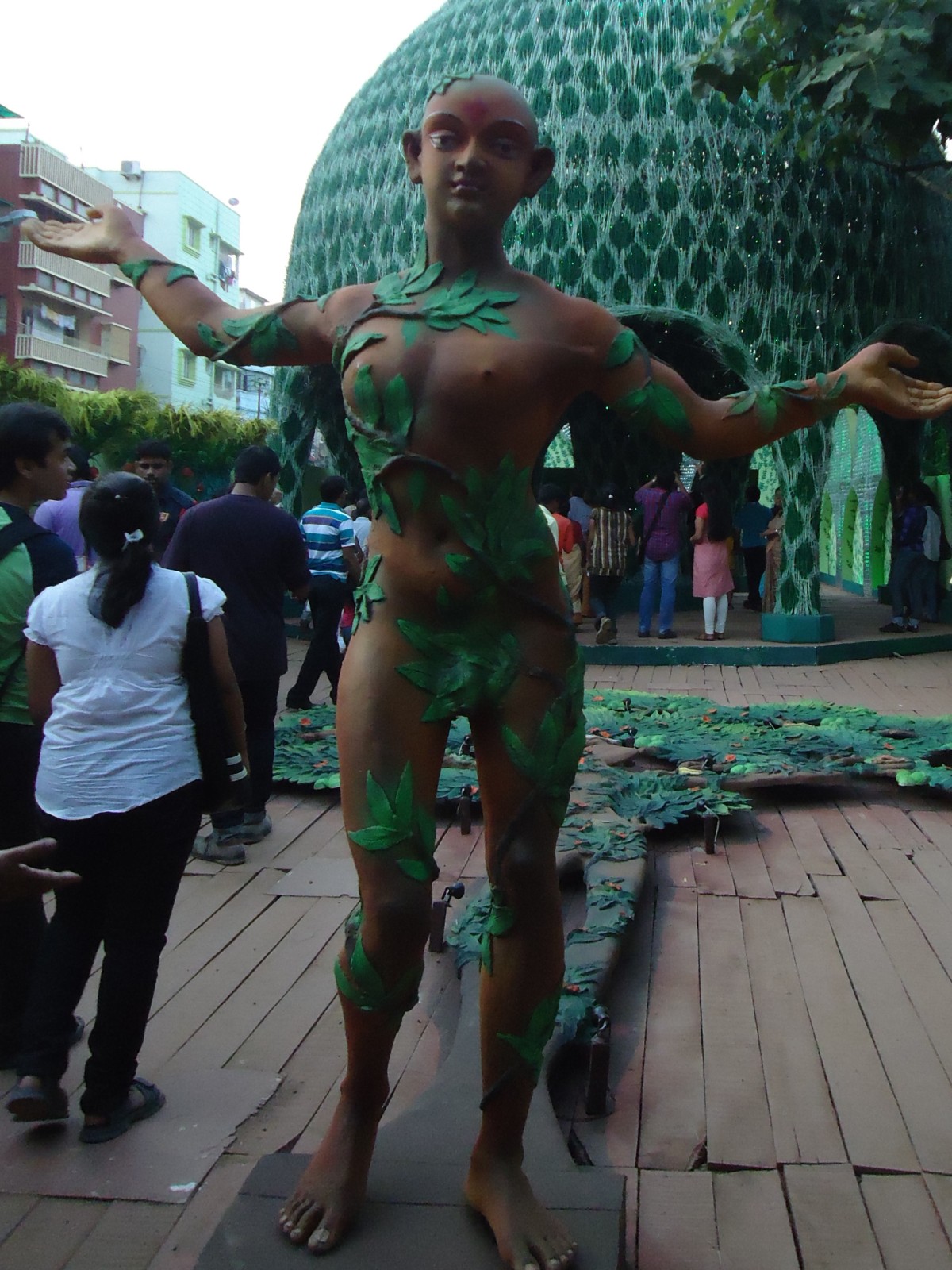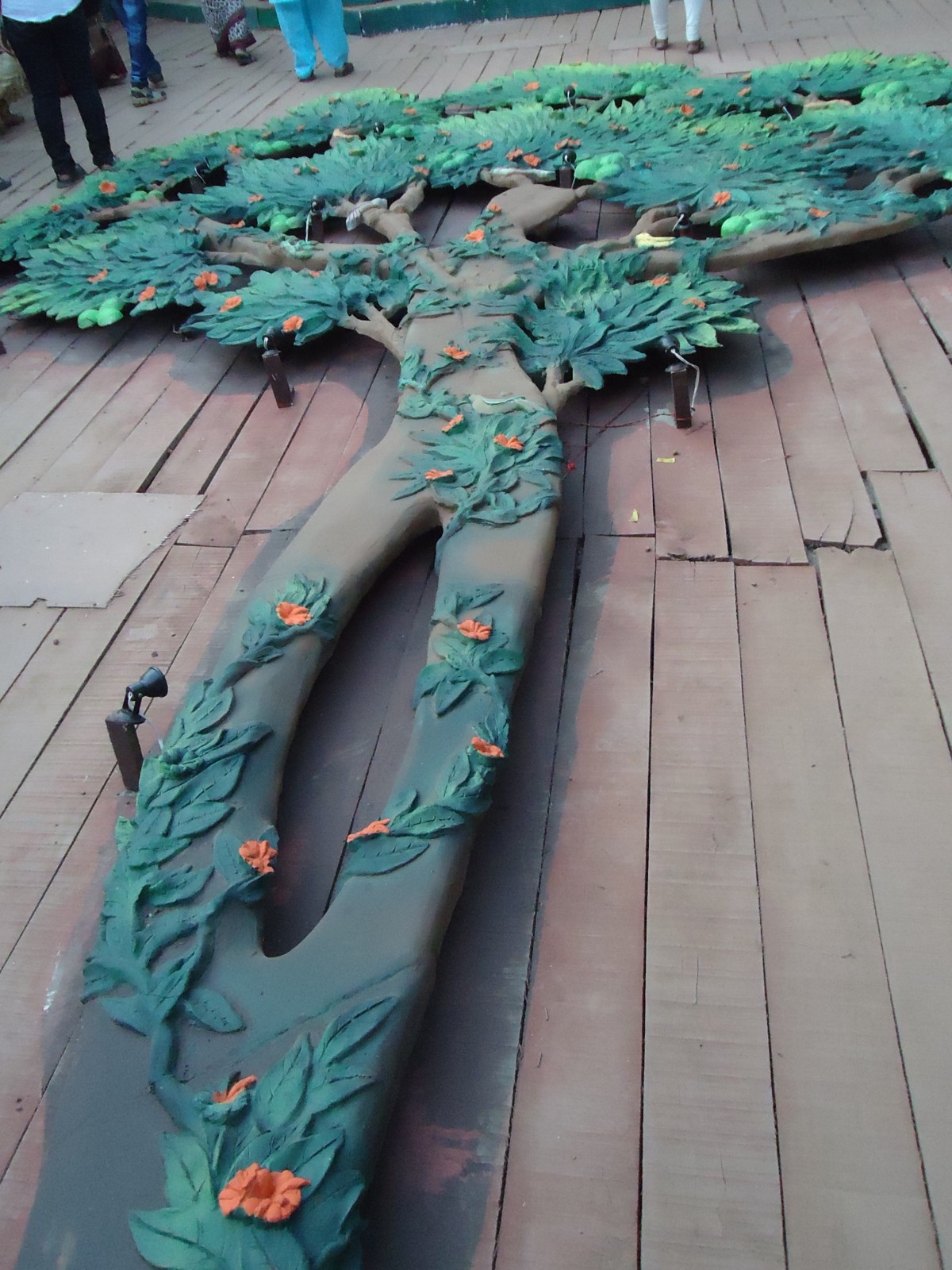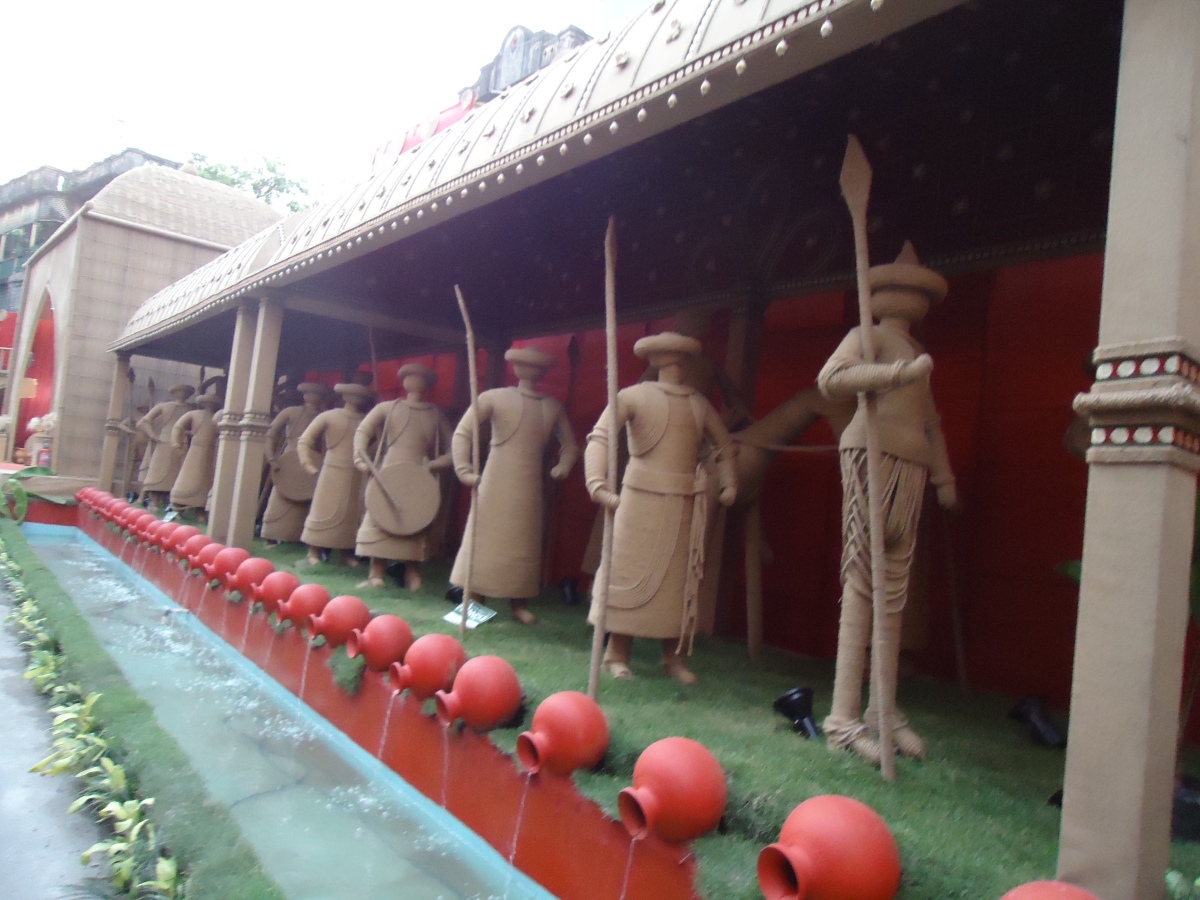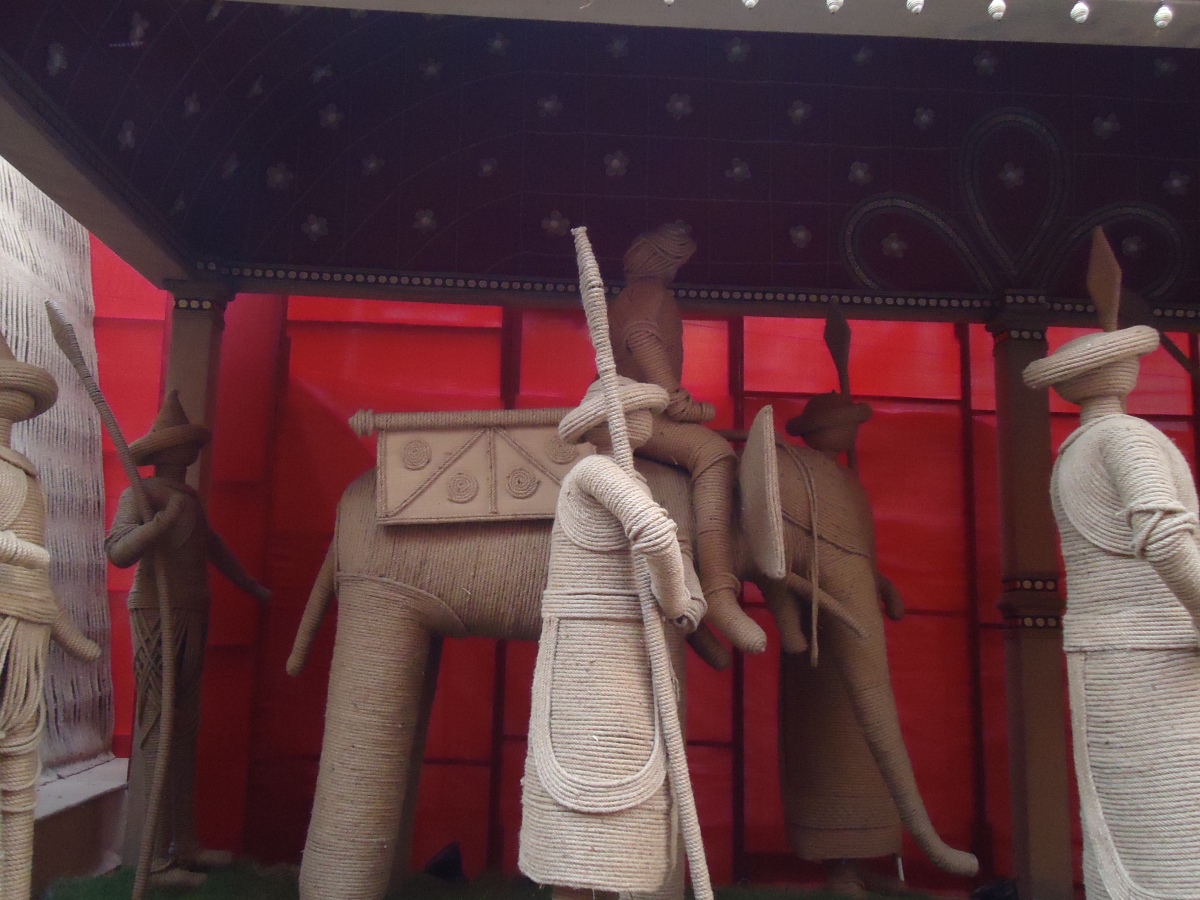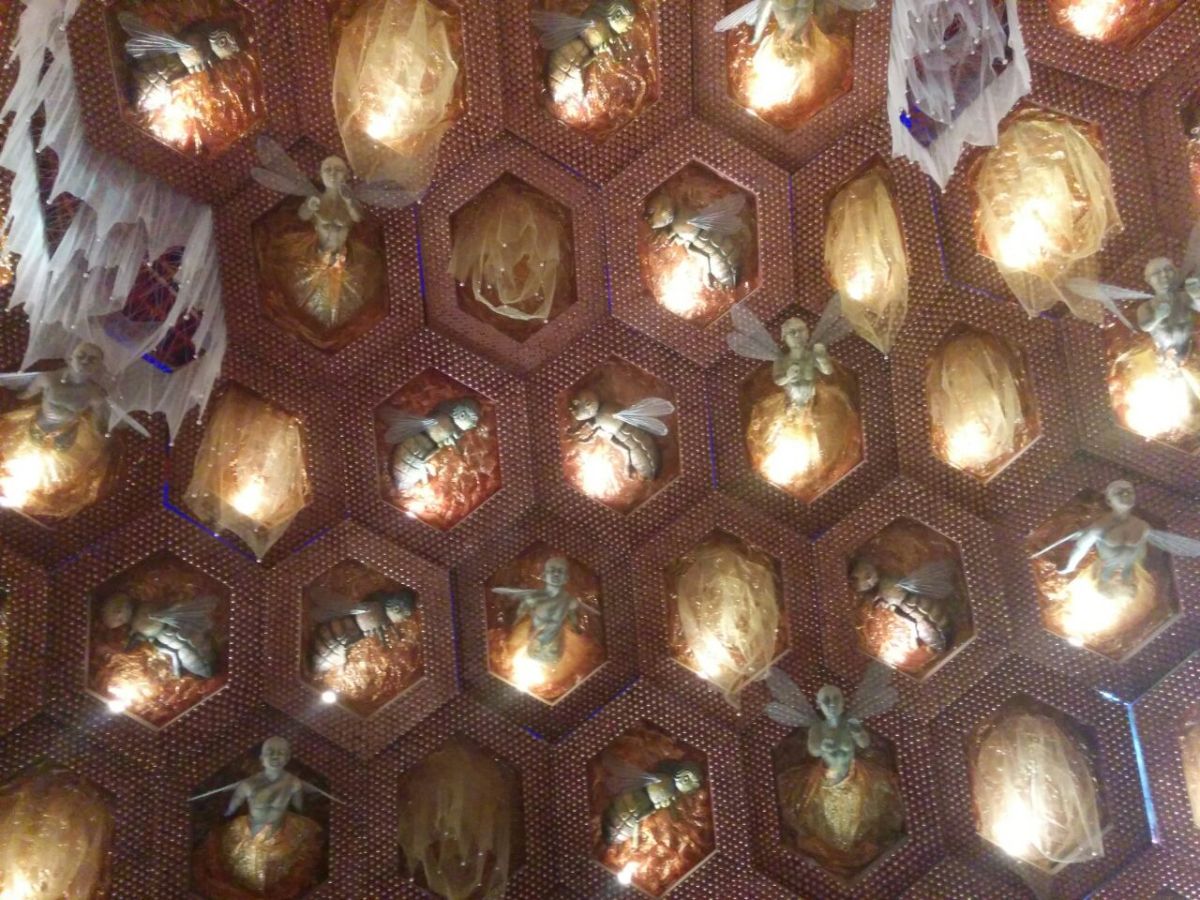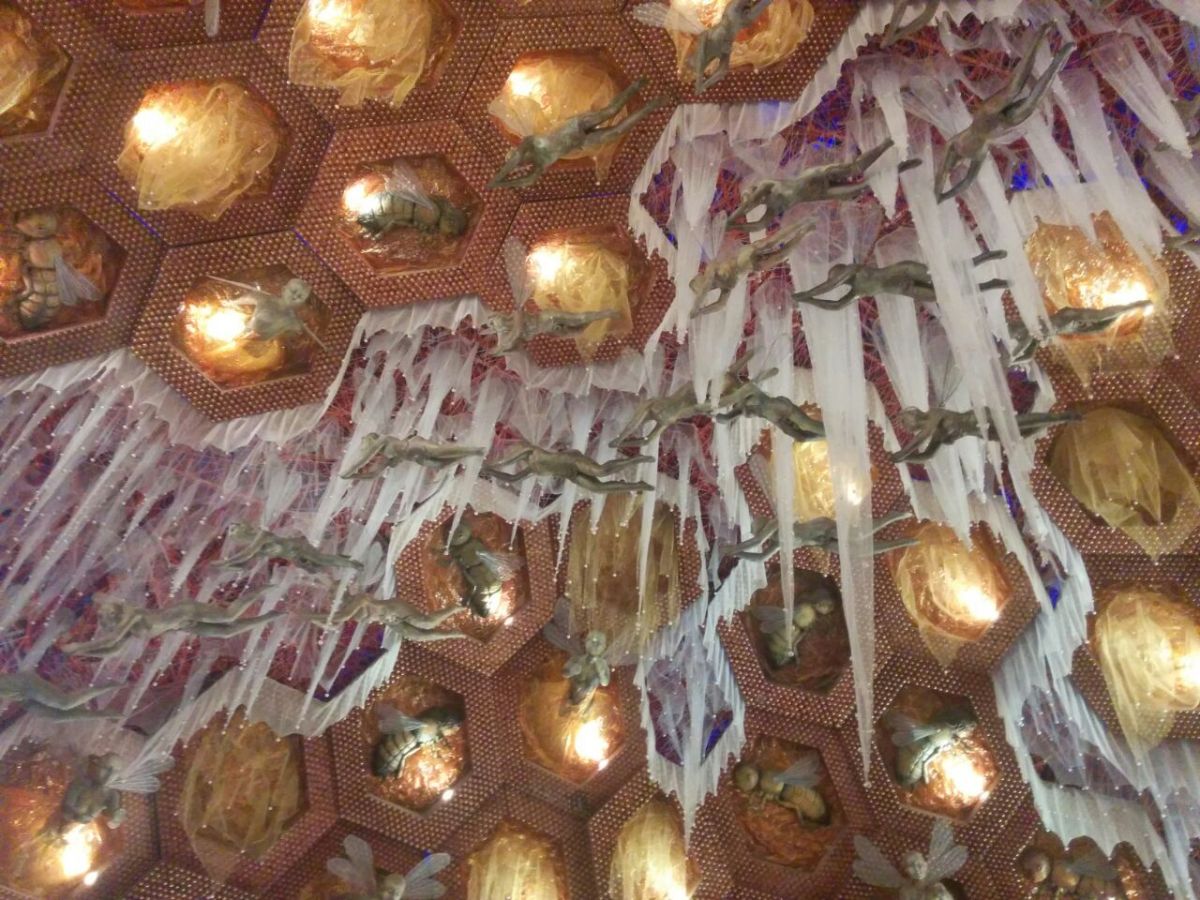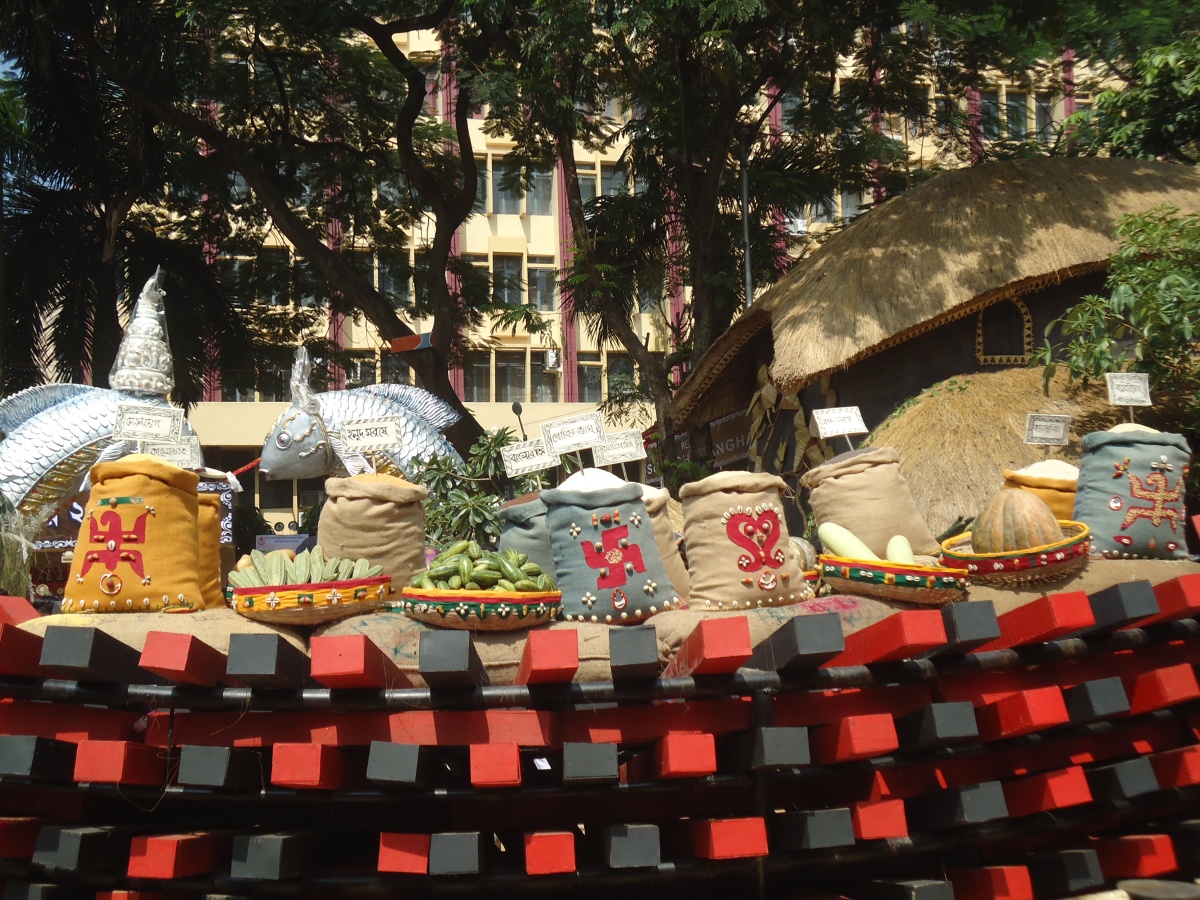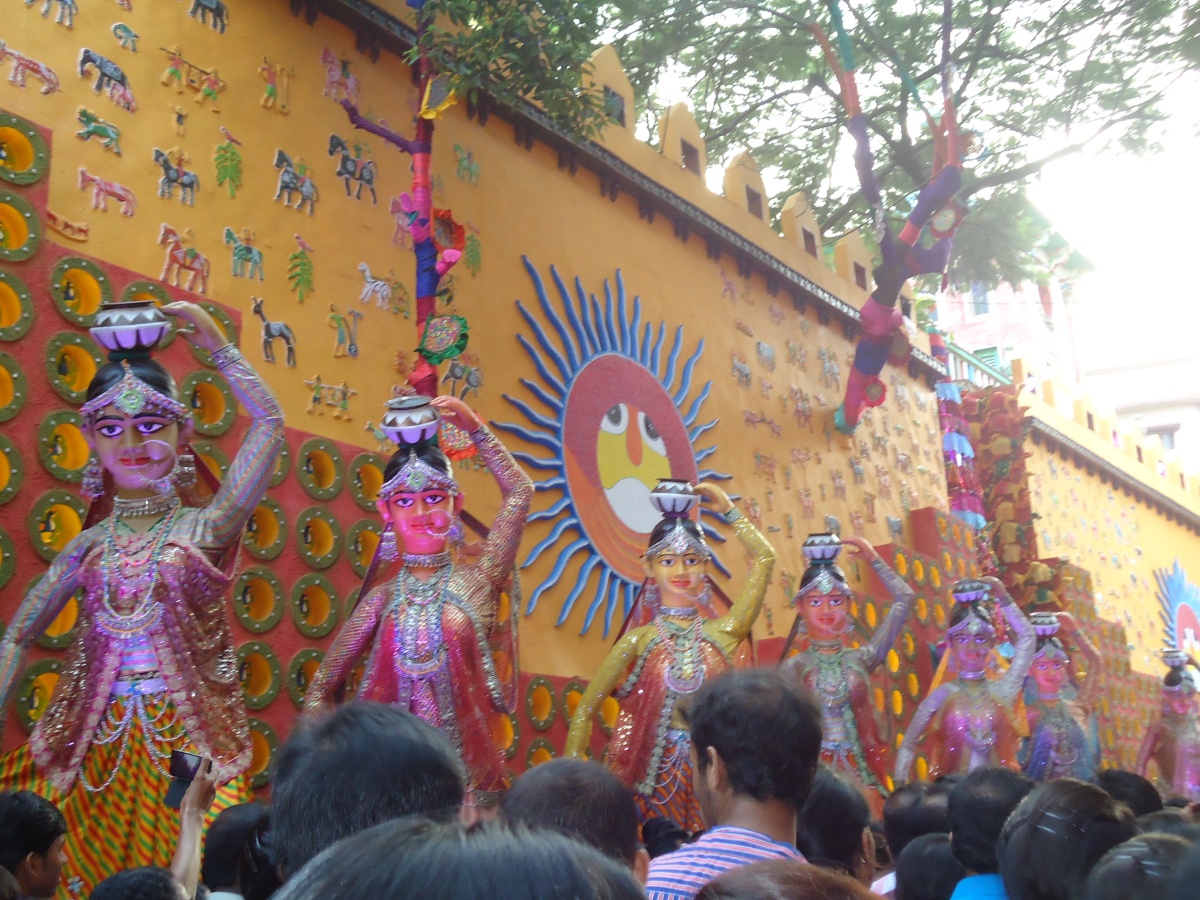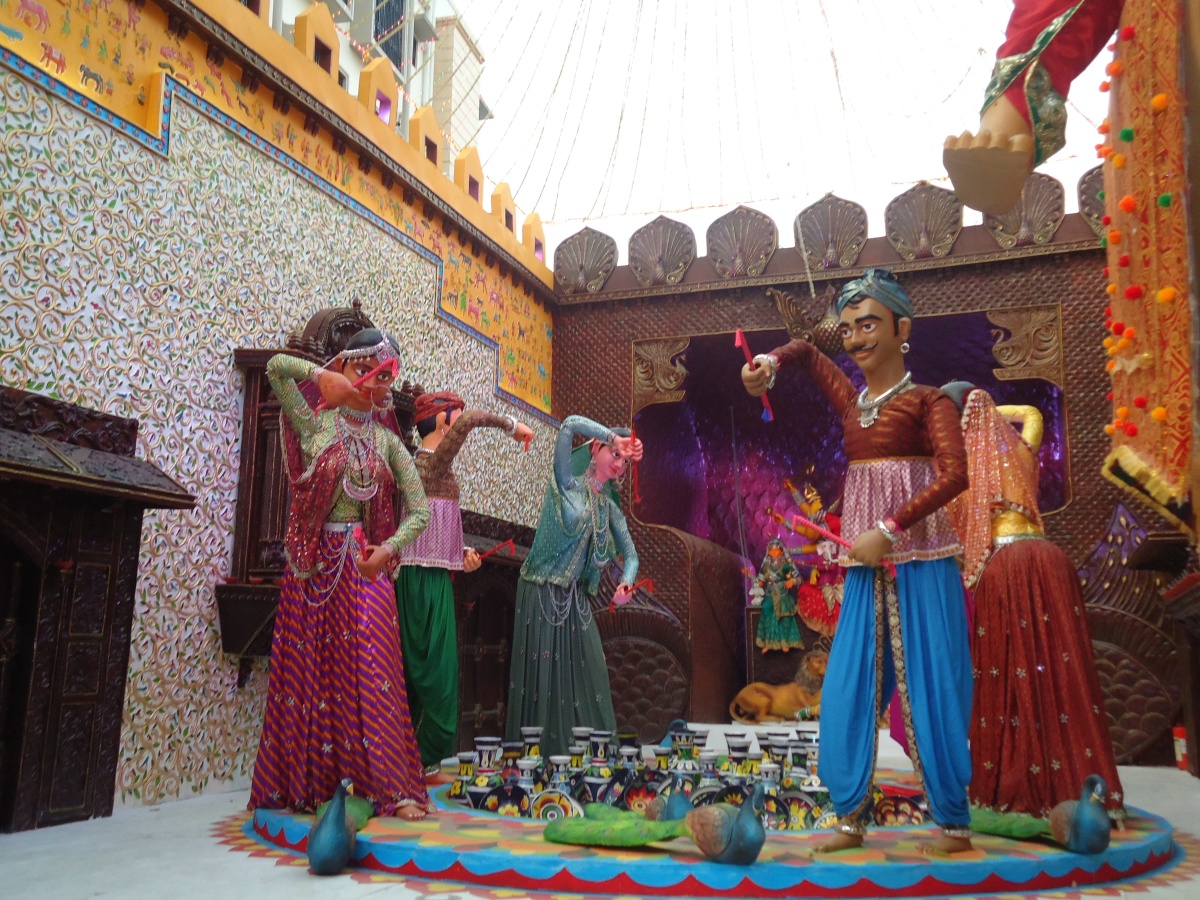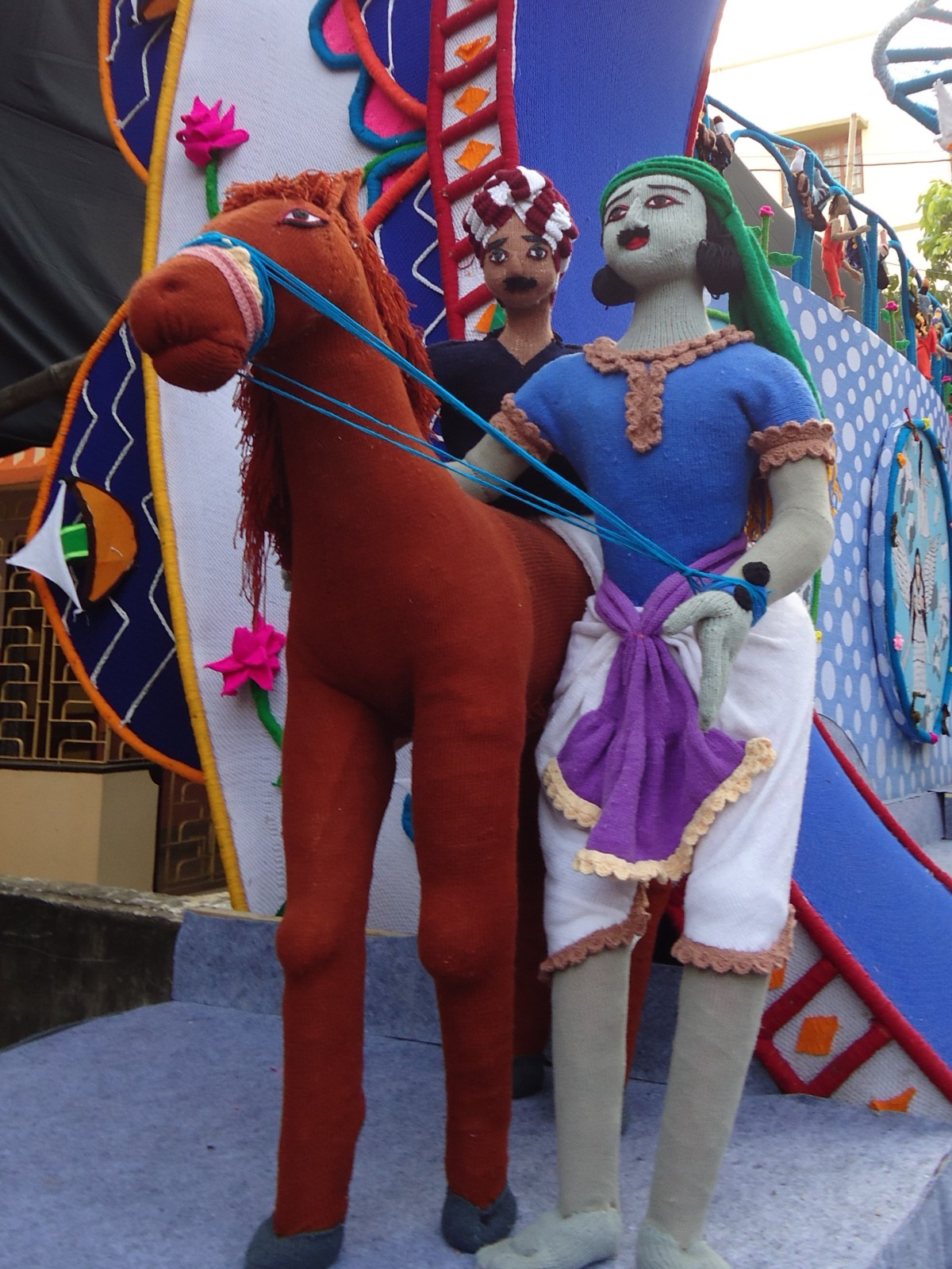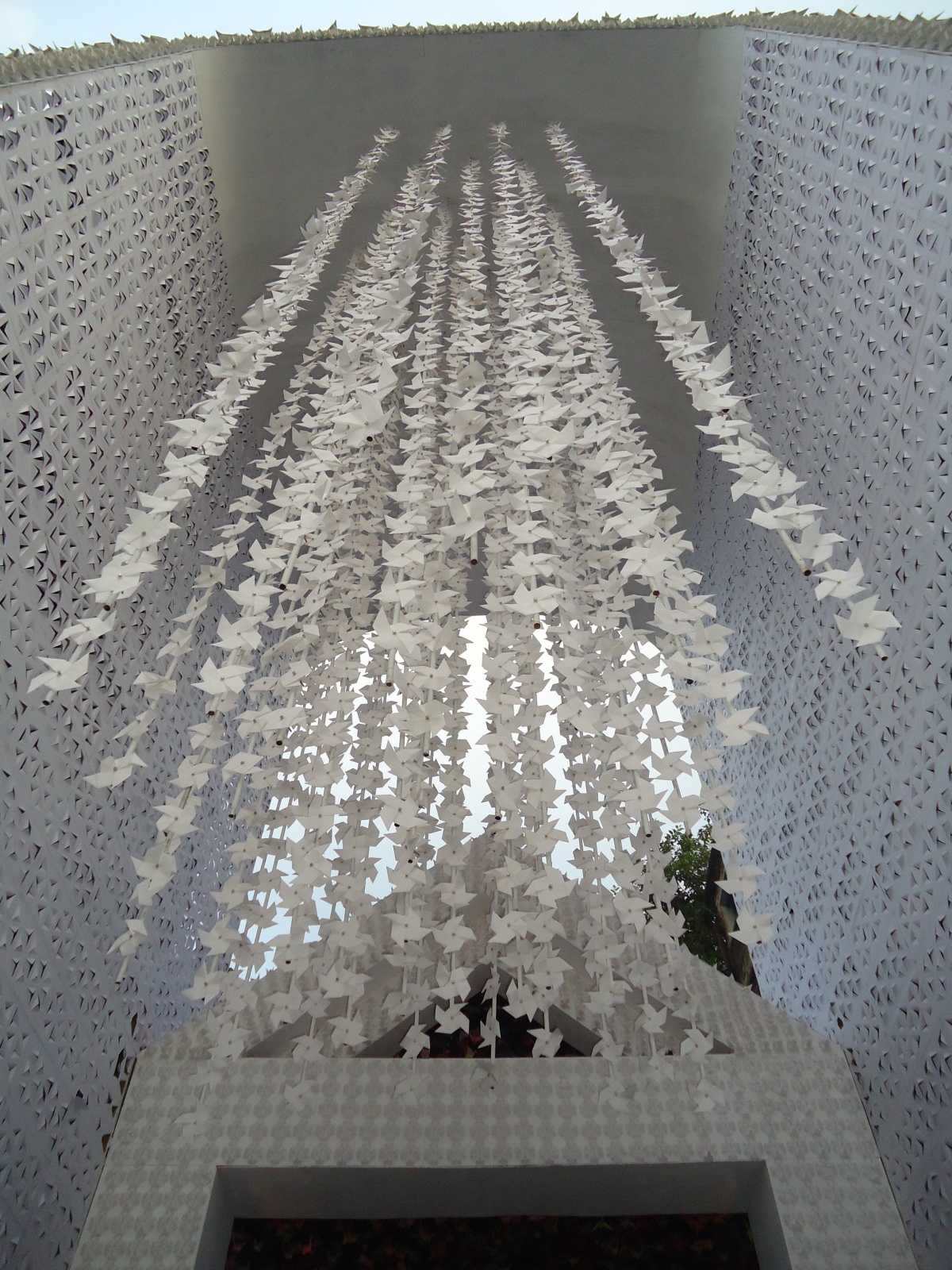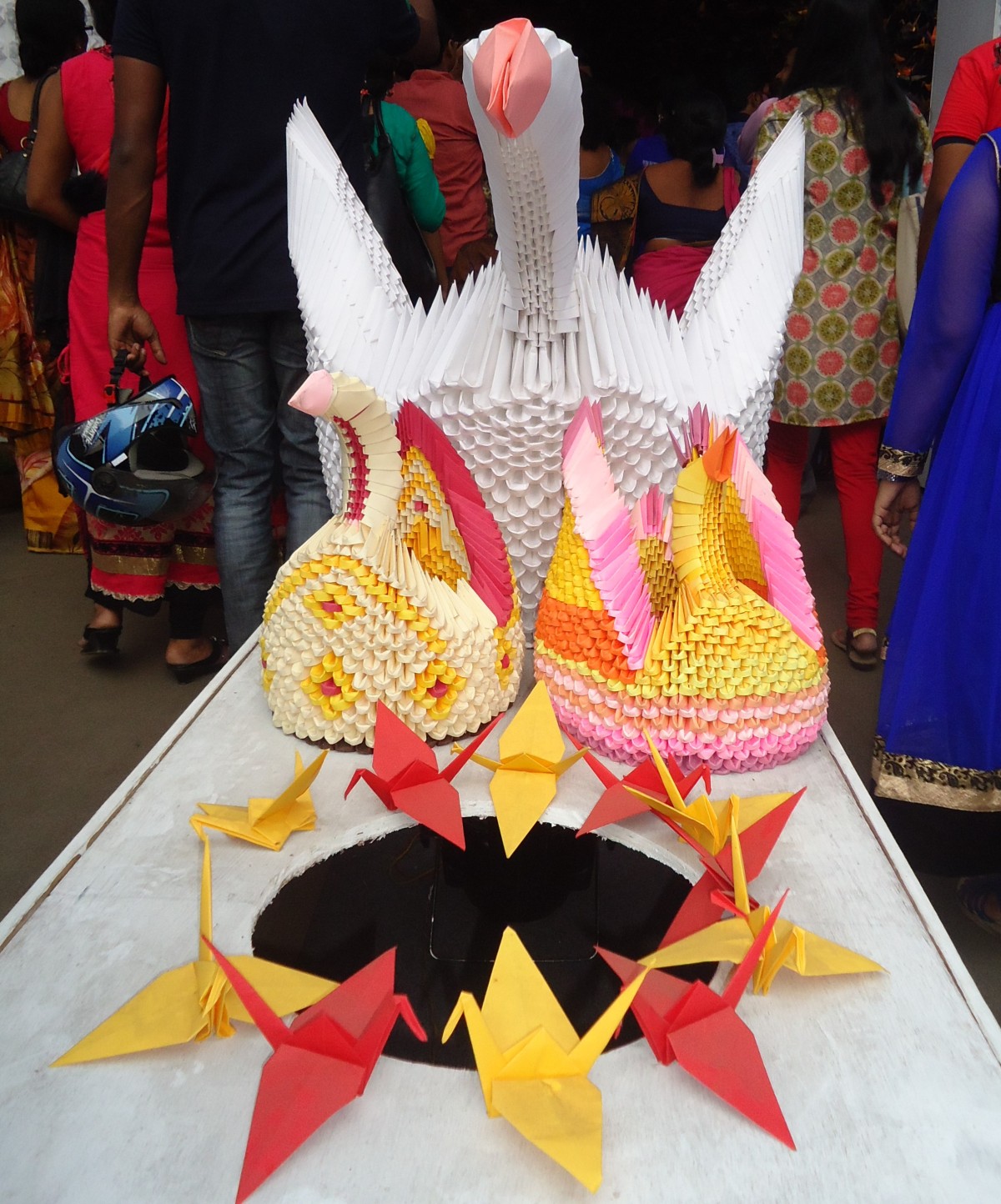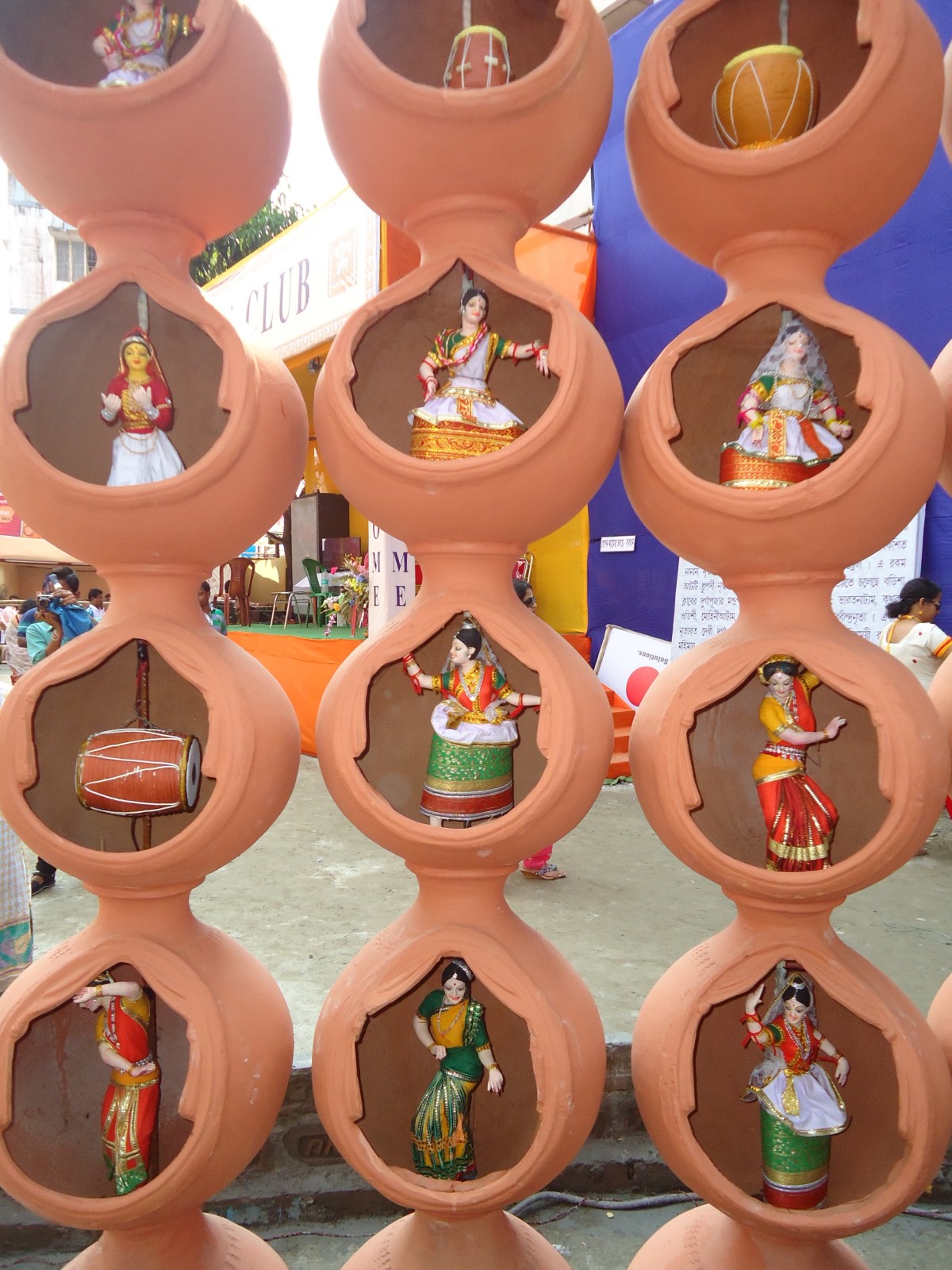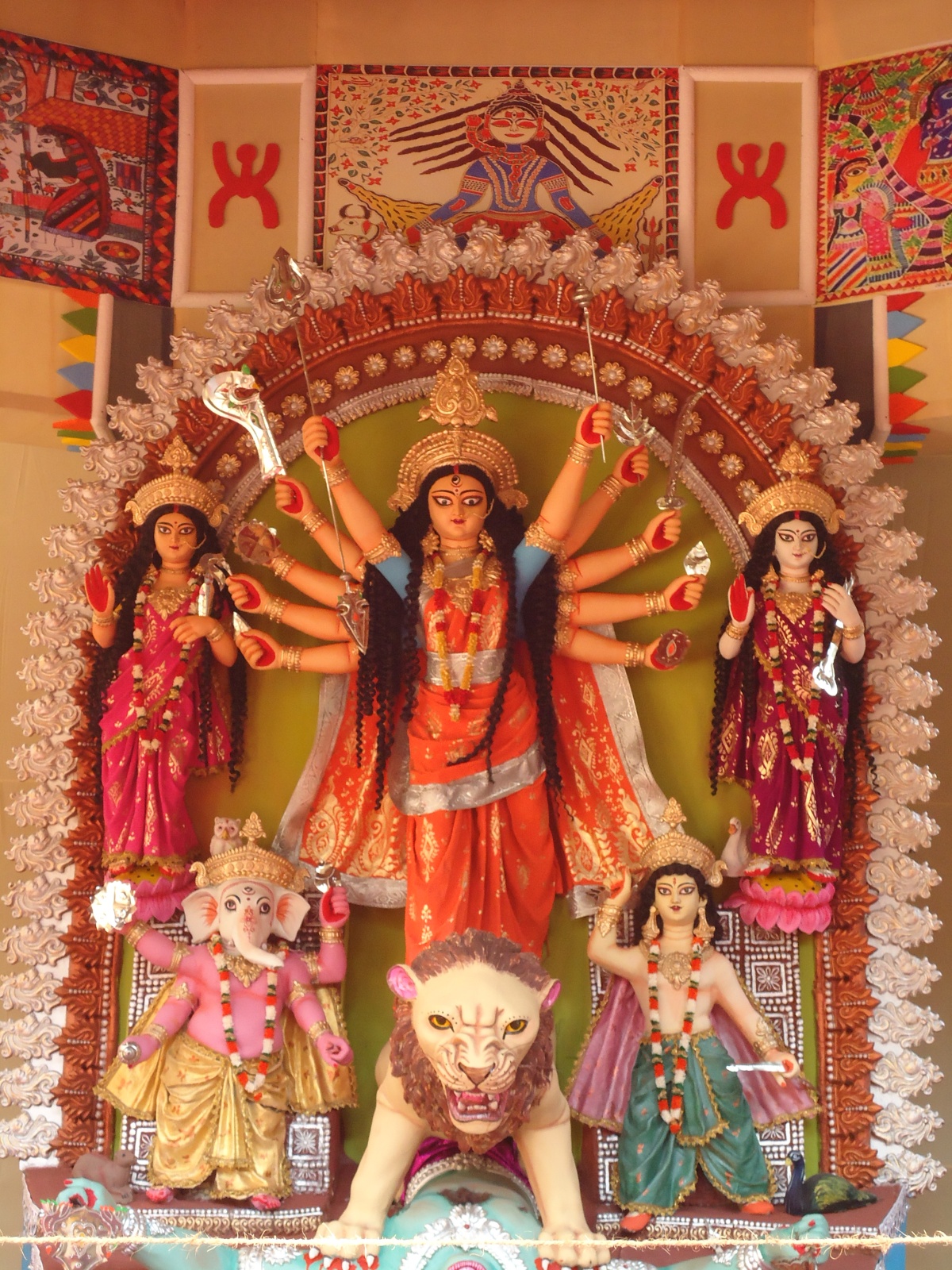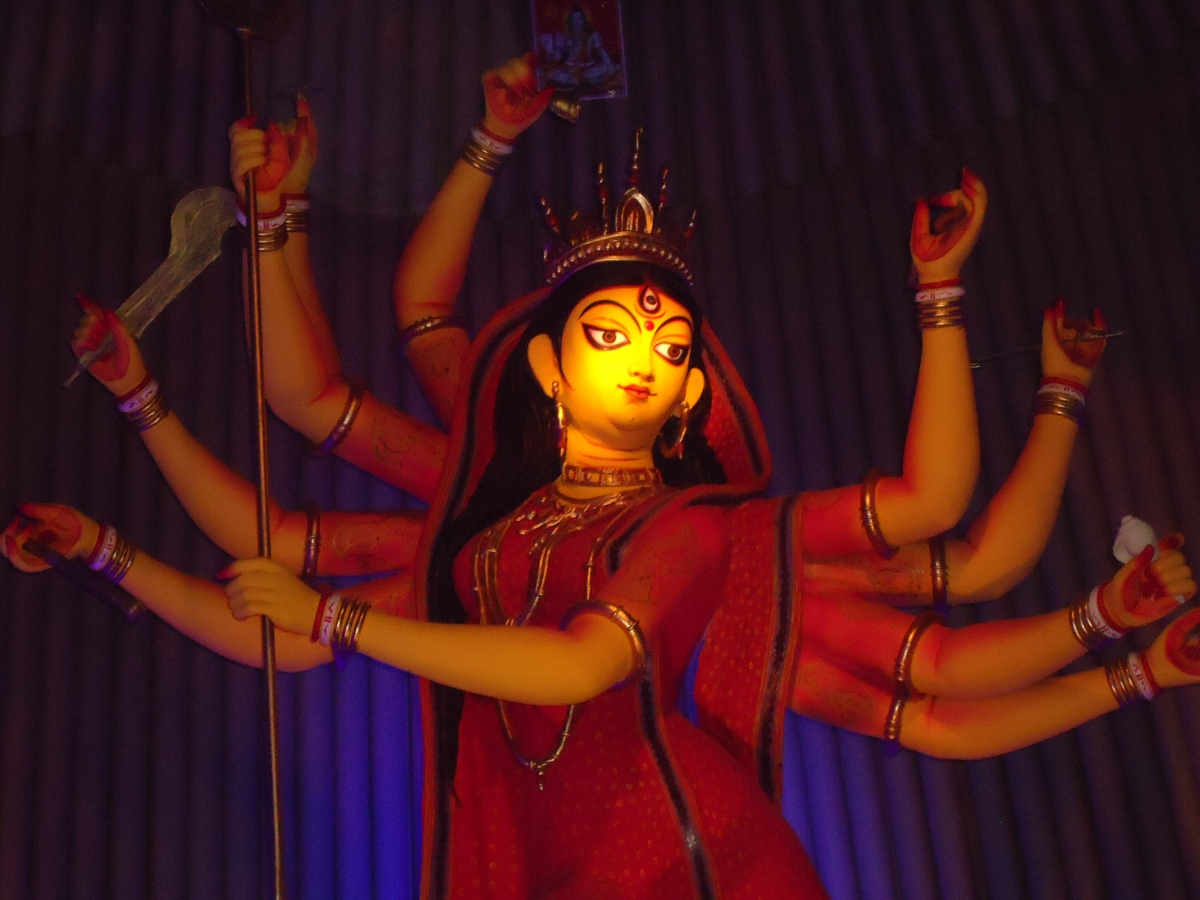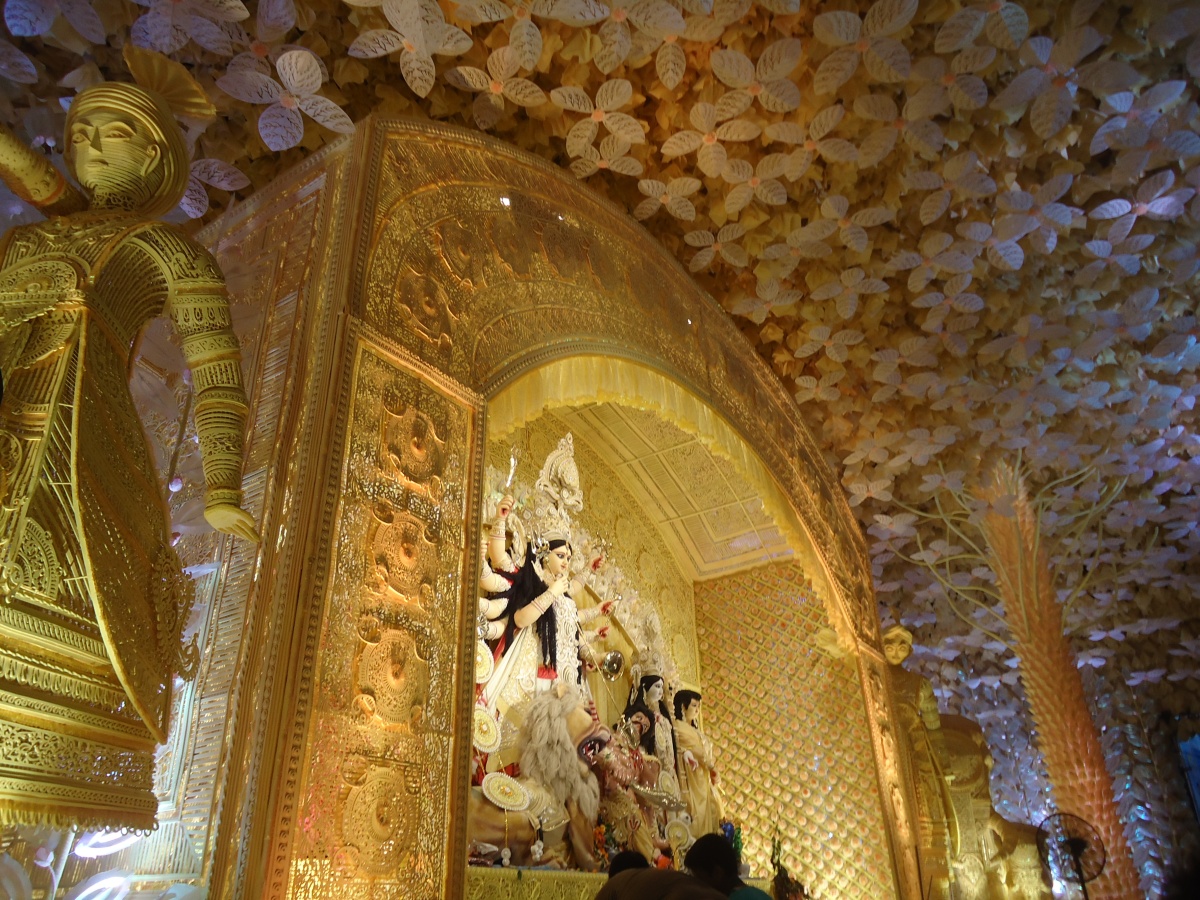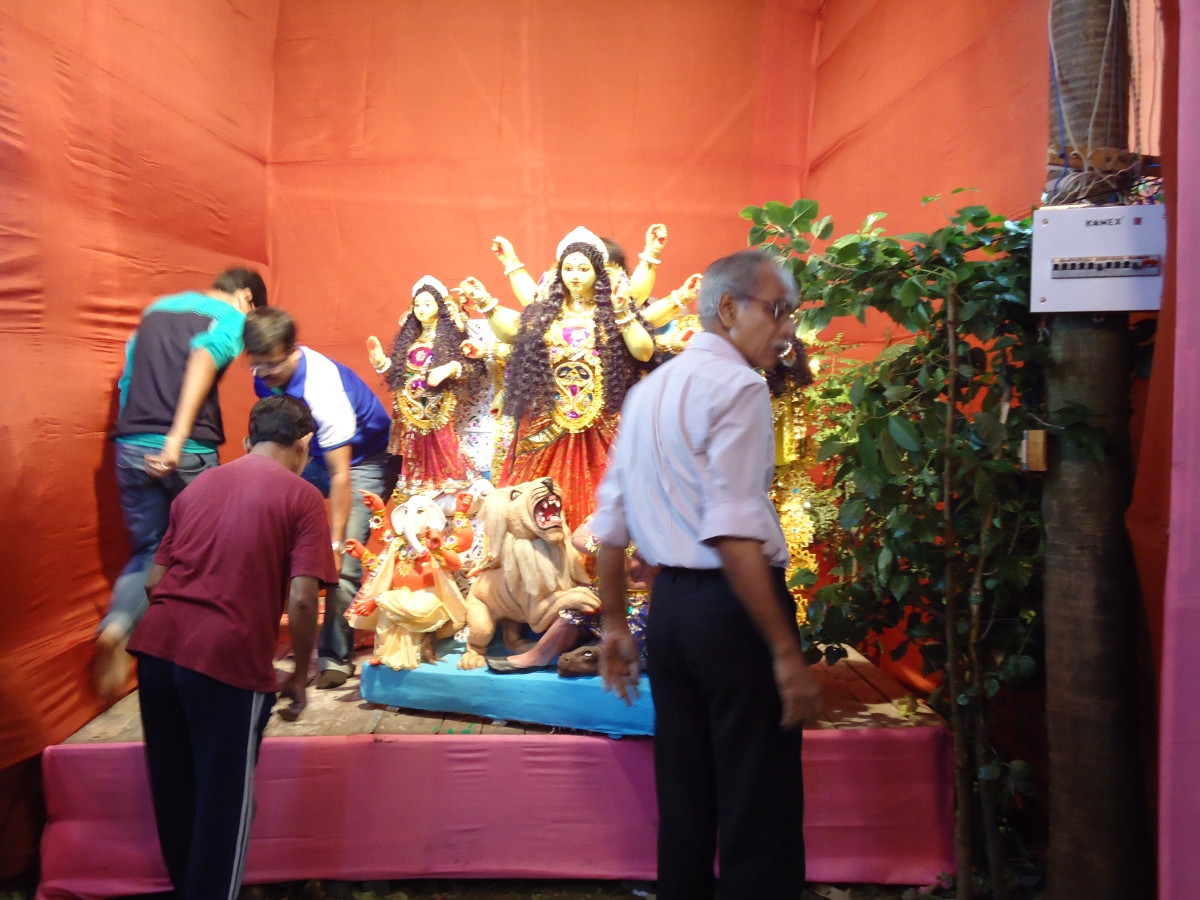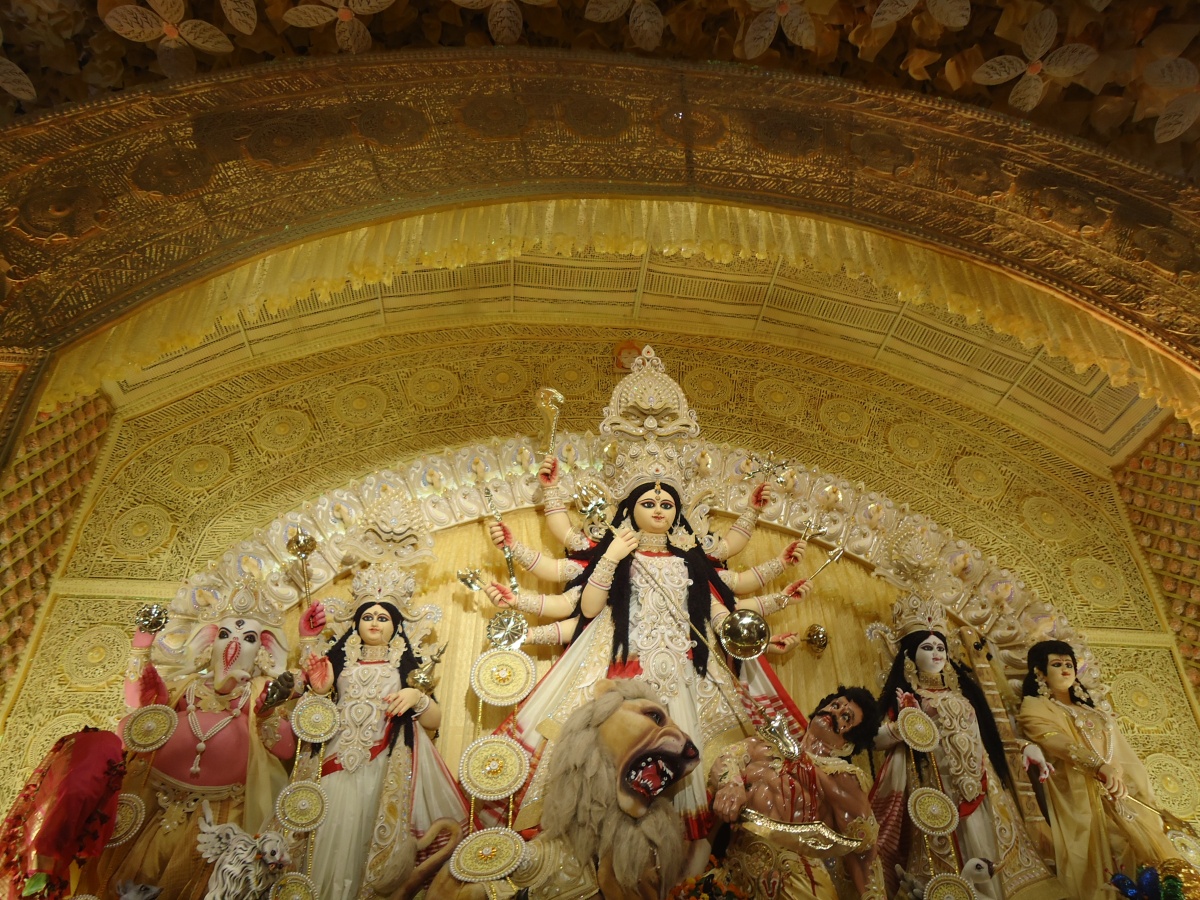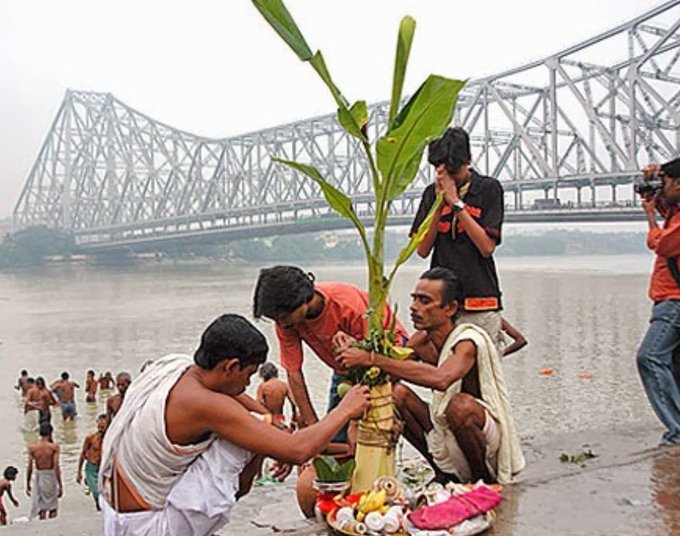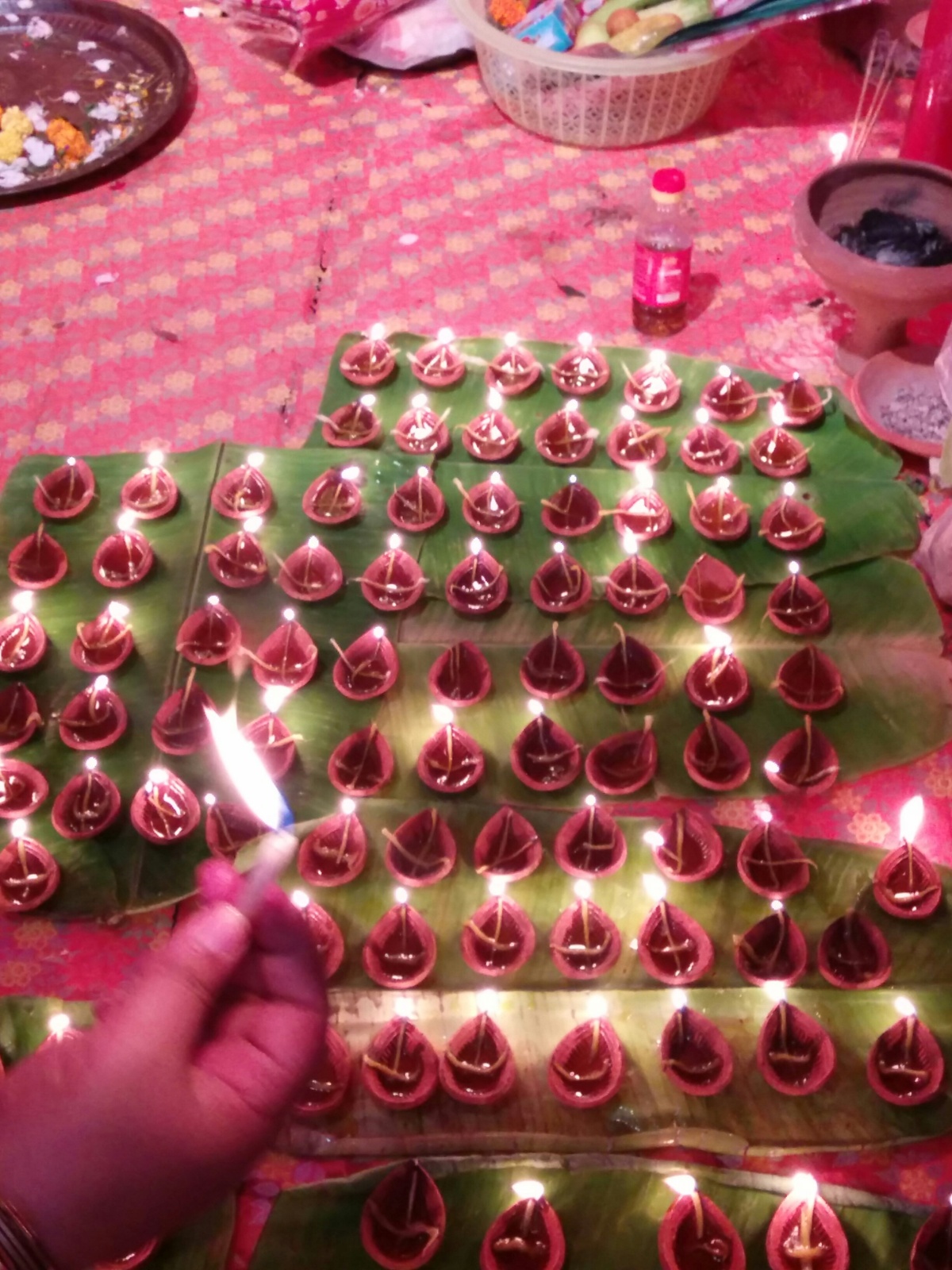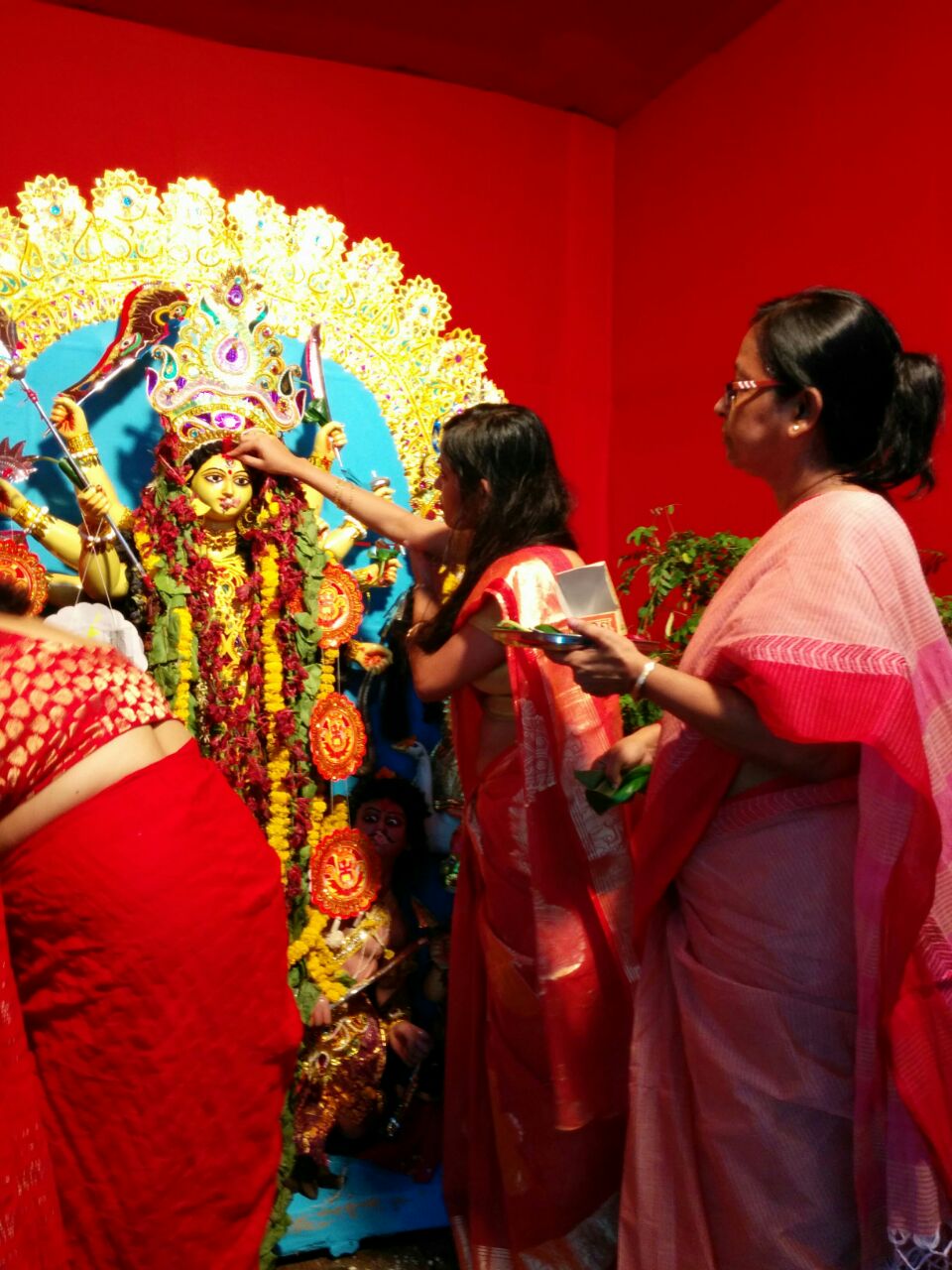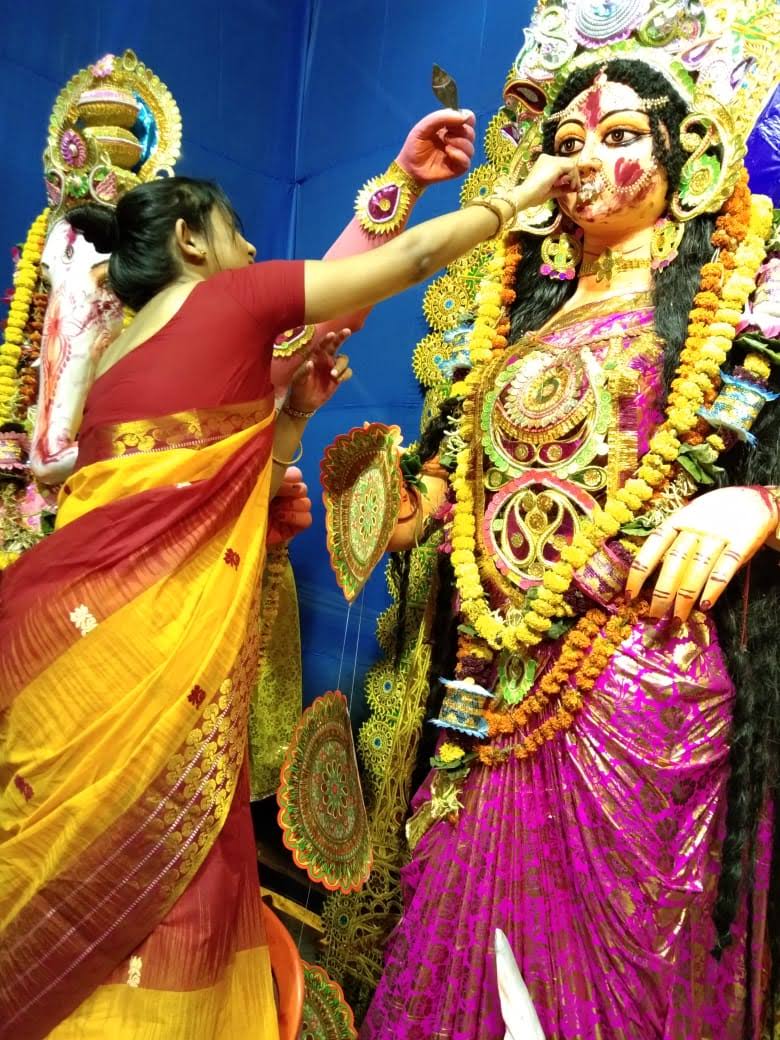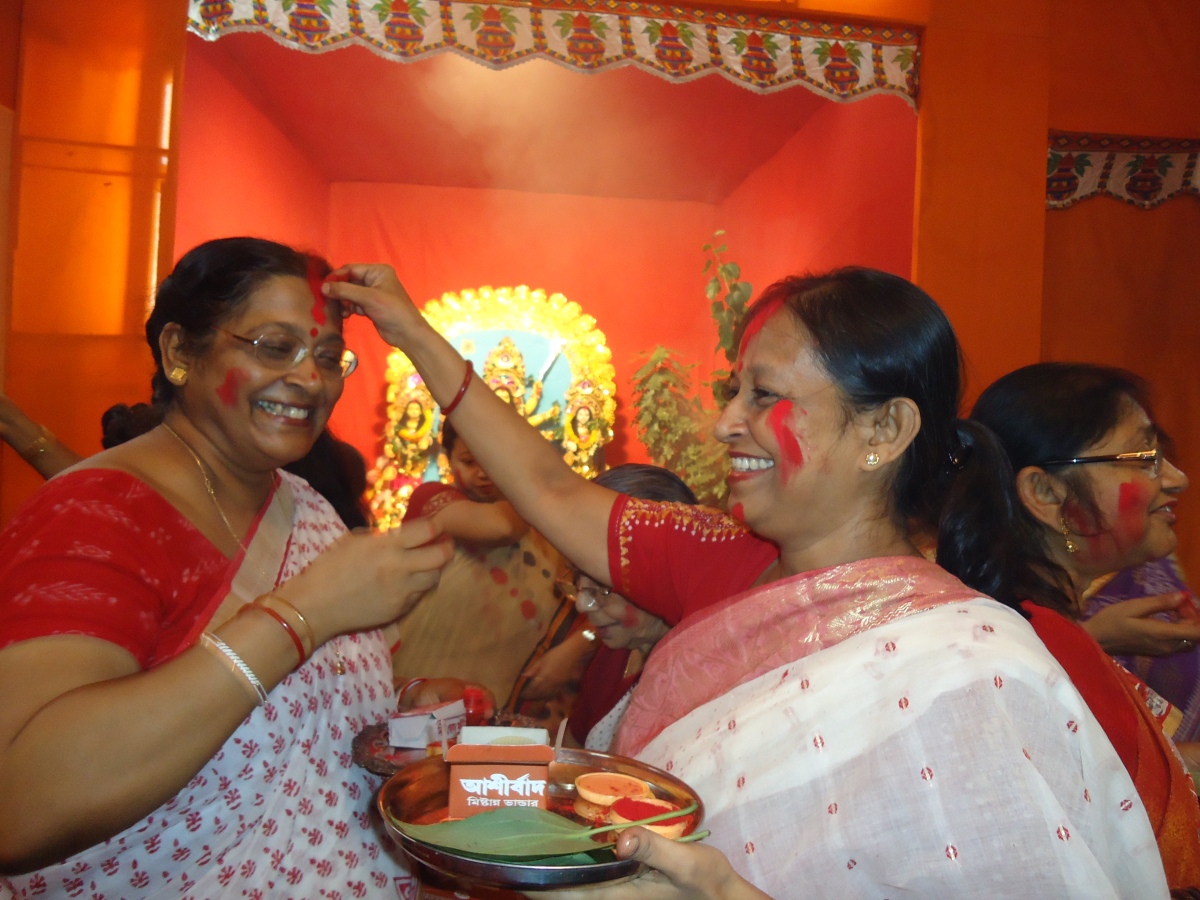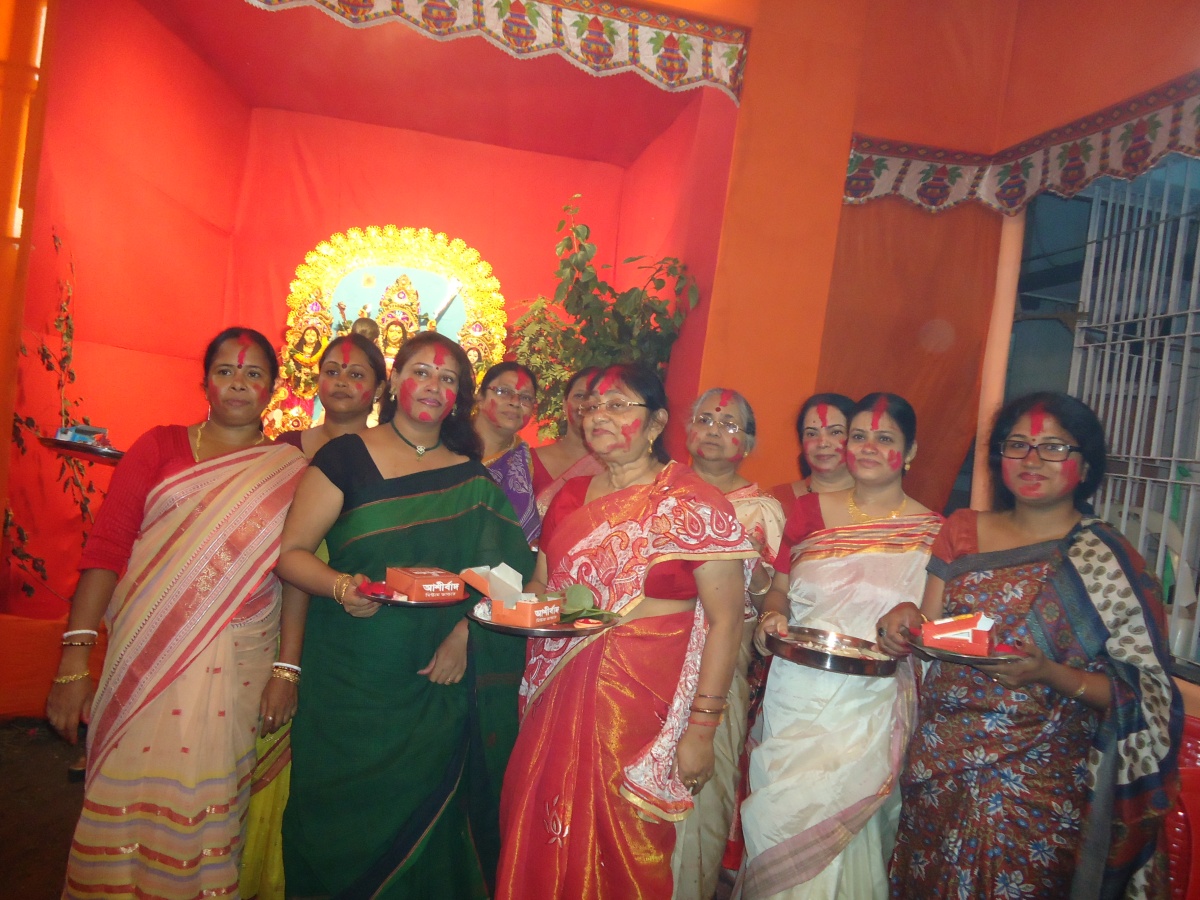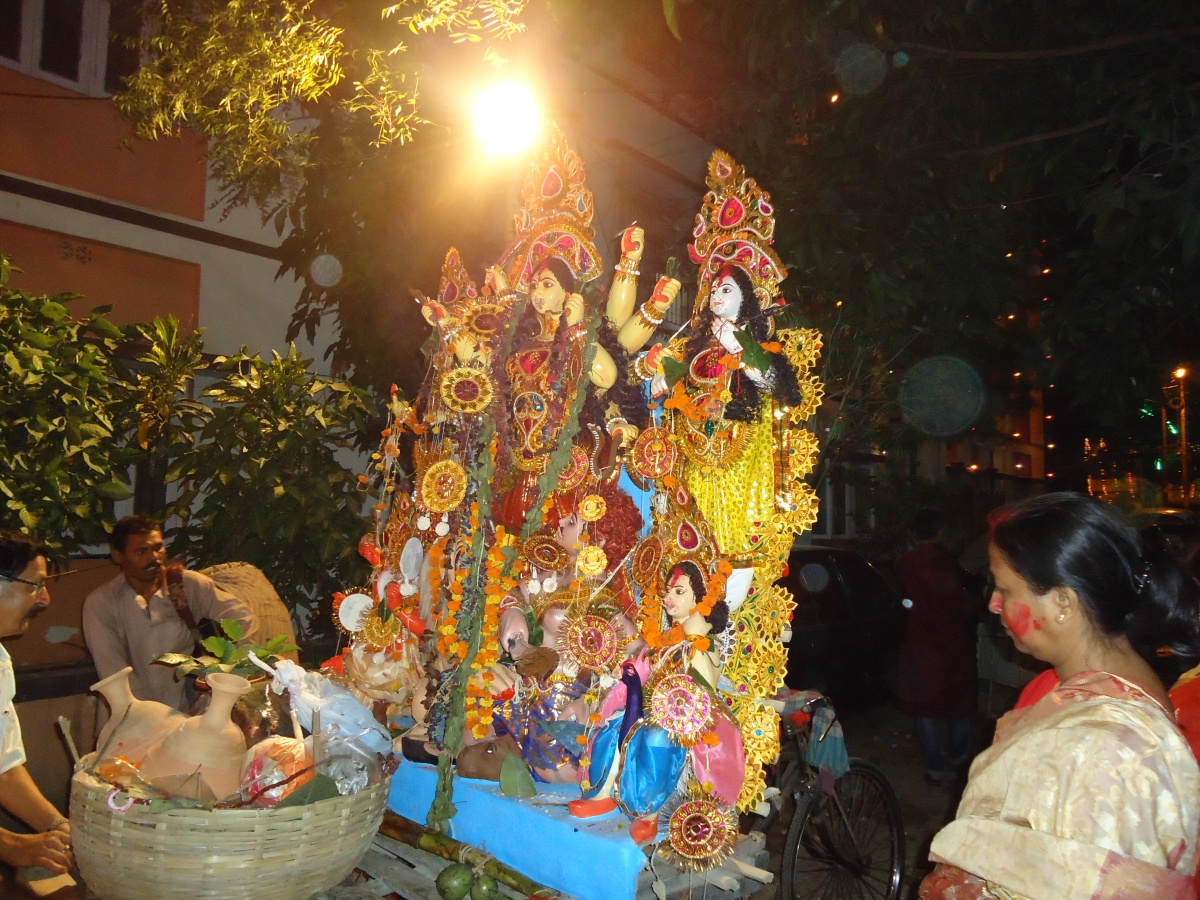Durga Puja in Kolkata Part 2 – Pandal Hopping & Pet Pujo
Durga Puja may be a religious festival but it is also a time for festivities and celebrations, of family and togetherness, of fun and enjoyment. In my last post, I shared with you the religious part of the festival – the rituals and the lores, the prayers and worship. Today I bring you the fun (and my favorite) parts of this grand festival – the gifts, the pandal hopping and the food.
Gifts
Pre-puja we i.e., Bengalis, embark on a mission of vigorous shopping. We shop for clothes, matching accessories and shoes for ourselves and for all relatives – it’s such fun choosing for parents, uncles, aunts, cousins, siblings. Then we visit each other’s houses to gift these clothes and accept ours in return. For me, since childhood, this has been one of the attractions of puja – new clothes! Donning our new clothes and getting all decked up, we then go out pandal hopping.

“Pandal” Hopping
A pandal is essentially a marquee or a tent which is erected during any event or in an open space. But for Durga Puja, a pandal is not a simple marquee – it is an elaborate affair with designs and decorations which are mind-blowing. They are works of art; in fact there are artists hired to envisage a theme and design the pandal. While some pandals are basic structures consisting of interwoven colorful fabric, most are thematic, extravagant edifices which are honestly jaw-dropping. Months are spent in planning and executing those designs which include attention to minute details and the overall picture.
The pandals are the best part of the “pujo” according to me. I brave the sun, the foot aches from the walking and the exhaustion at the end of 5 days just so that I can go around the city and get to see all the marvelous pandals. Below are some of the best ones that I have seen over the years. Pictures speak better than words in describing the awe-inducing craftsmanship and ideation.
Lighting
Apart from the pandals, there is the lighting. The whole city gets decked up in colours and lights during this time. Kolkata is never more beautiful than during Durga Pujo. All pujo have fancy lights to brighten up the decorations but some have intricate lighting panels depicting some story or some figures etc. Some examples here:

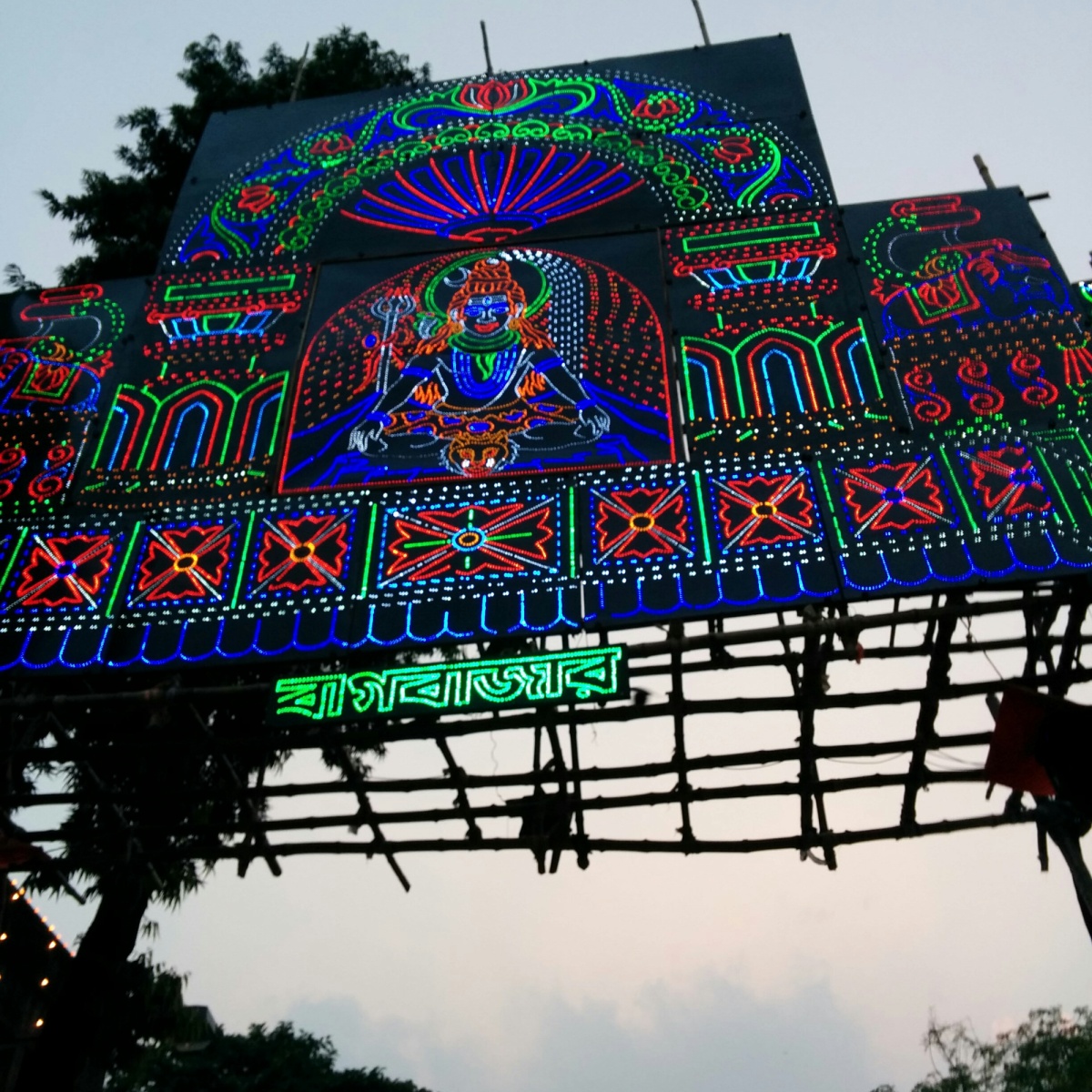

The Food
We Bengalis love food. We say we “live to eat, not eat to live”. I totally go by that mantra. The pujas just give us another excuse to splurge out and eat all sorts of food. Be it biryani or chowmein or kosha mangsho (meat curry) or our favorite Kolkata street food fare; cuisine doesn’t matter, we love to gorge on anything delicious! Between all that hopping between pandals, we will do our “pet pujo” meaning, worshipping our appetite. My favorites are:
- Phuchka: fried puffed flour/semolina balls stuffed with spicy mashed potato and tangy water.
- Chicken Roll: rolled flat bread stuffed with spicy chicken mixture.
- Papri Chaat: mini flat flour tacos topped with a mix of potato, onions, peanuts and a sweet-tangy sauce.
- Fish Fry – deep fried crumbed fish fillets.
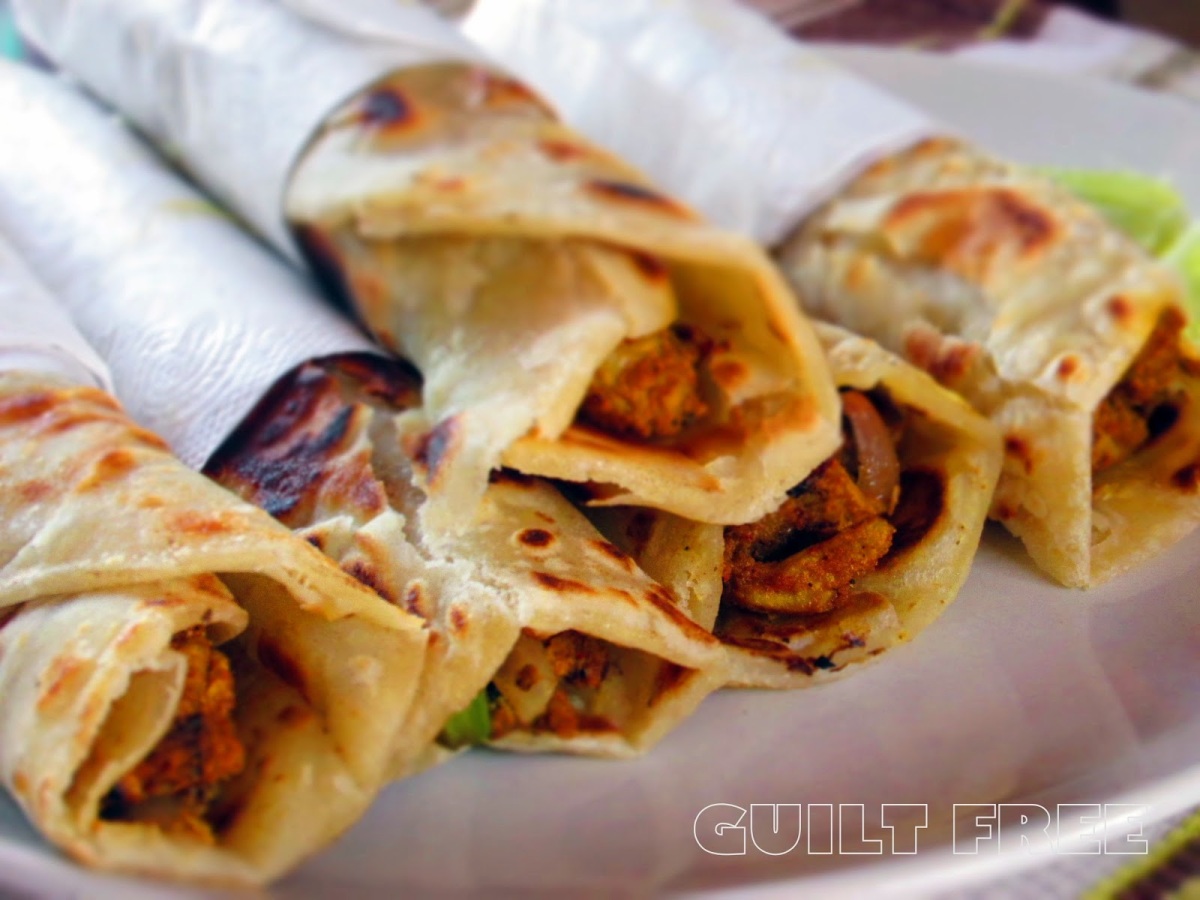
Chicken roll. (PC: 4.bp.blogpost) 
Phuchka (PC: Ribbons to pastas) 
Papri Chaat (PC: The Kolkata Buzz fb page) 
Chowmein Kolkata style (PC: NDTV food) 
Fish Fry (PC: Zappfresh) 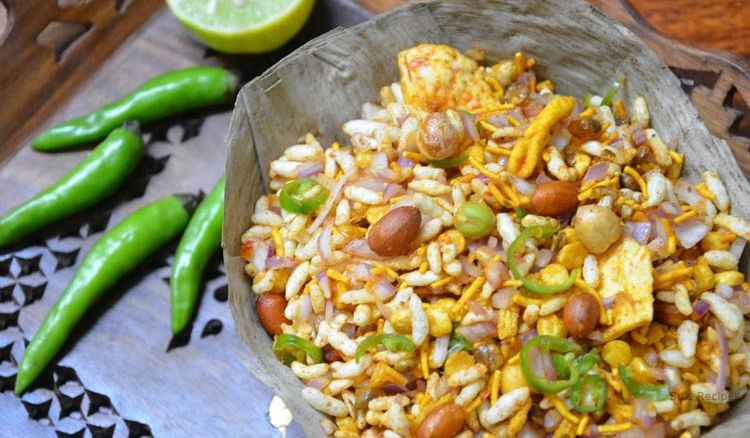
Jhal Muri (puffed rice spiced up with onions, tomato, masala) PC: Jiyo Bangla
A Time to Just Be
In the busyness of everyday life, we barely get time to meet friends or family or to simply relax. Durga Puja is, at its root, a time to take a break from the rigors of life. We catch up with friends, meet our extended family, forget our stresses and just enjoy.
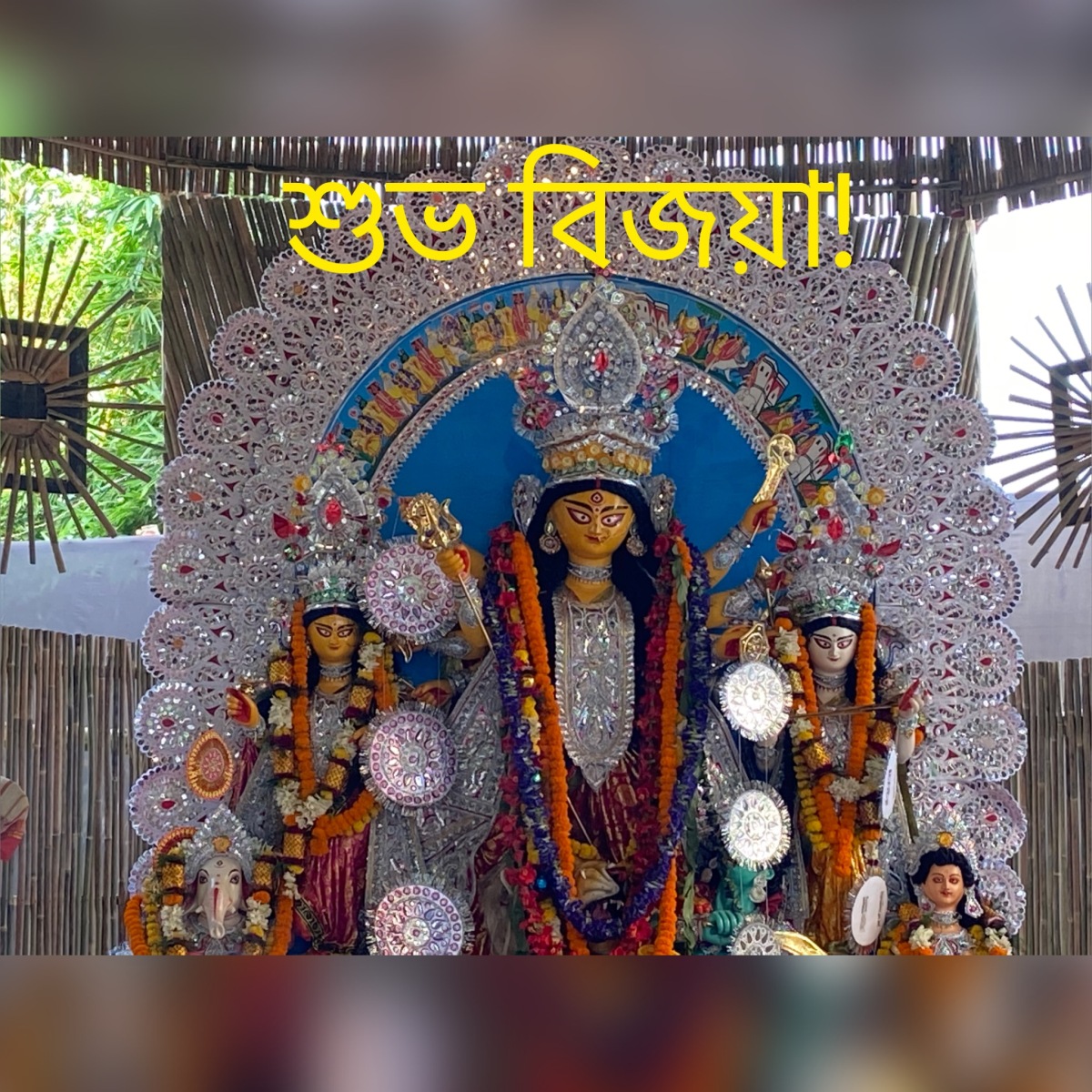
I’m proud to share my culture as part of Blogchatter‘s My Friend Alexa campaign; they are helping me take my blog to the next level.
Durga Puja in Kolkata Part 2 – Pandal Hopping & Pet Pujo Read More »



